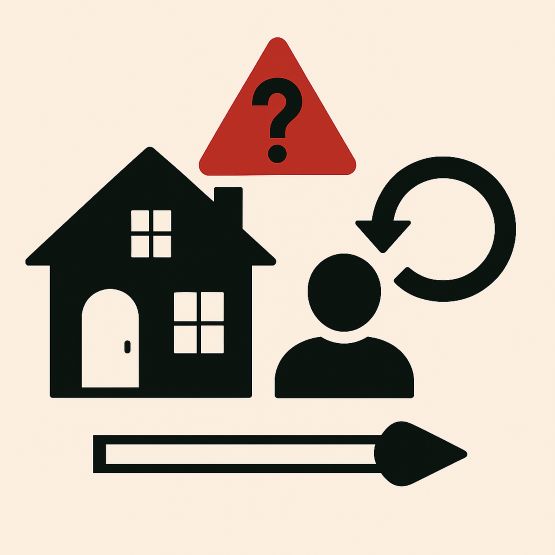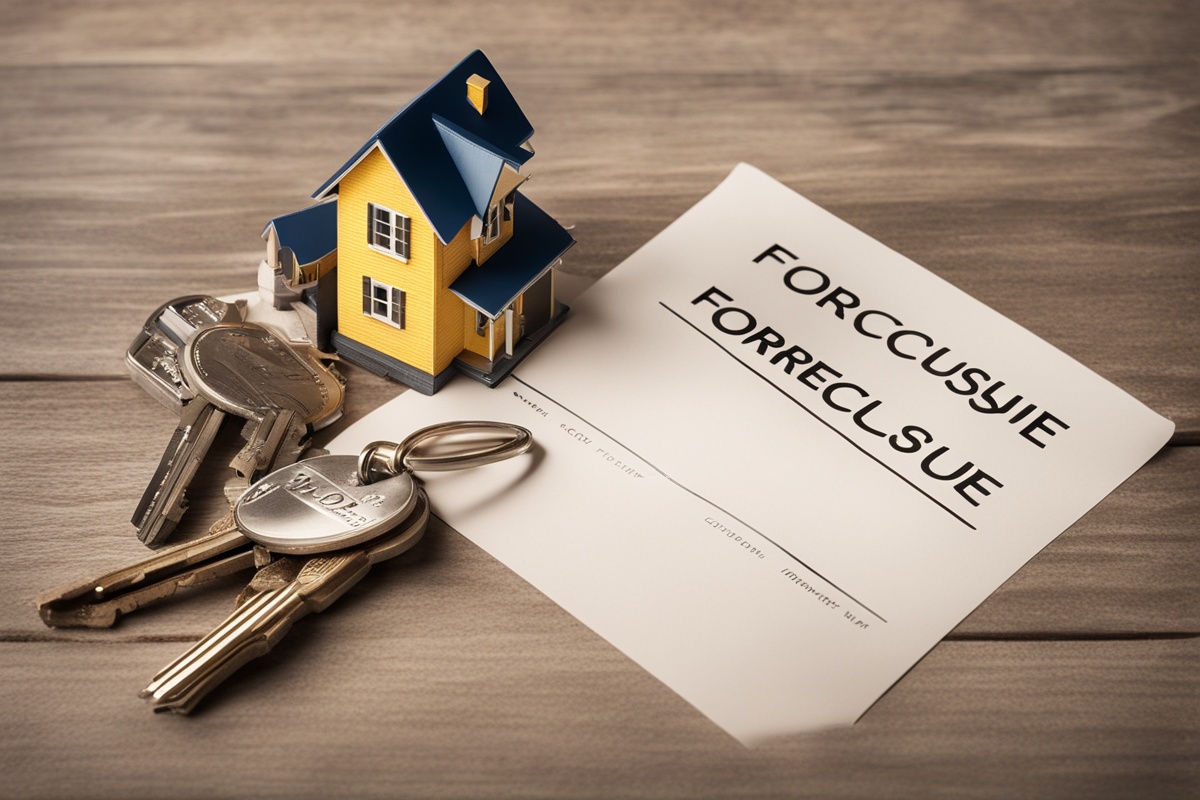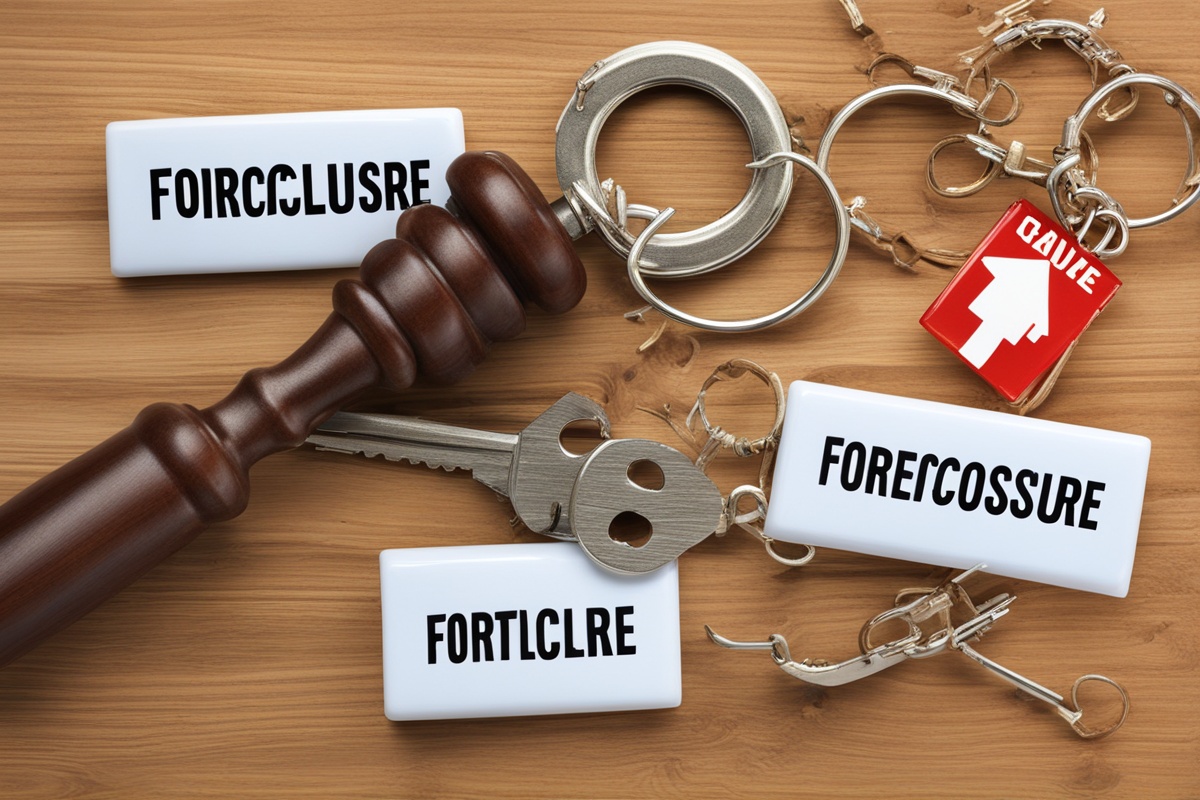If you’re facing financial hardship and the looming threat of losing your home, understanding the ins and outs of foreclosure can feel overwhelming. This foreclosure guide is designed to break down the process, compare it to viable alternatives, and provide actionable advice to help you navigate this challenging situation. Whether you’re a homeowner struggling with mortgage payments or simply seeking to educate yourself, this post will offer clarity on foreclosure proceedings and explore options that could save your home—or at least minimize the damage to your financial future. Let’s dive into the critical aspects of foreclosure, why it happens, and what you can do to avoid or mitigate its impact with practical insights and expert-backed information.
What Is Foreclosure? Understanding the Basics
Foreclosure is a legal process where a lender takes possession of a property due to the homeowner’s failure to make mortgage payments. It’s often the last resort for lenders, but it can have devastating consequences for homeowners, including damaged credit and loss of equity. According to a report by the Federal Reserve, foreclosure rates tend to spike during economic downturns, as seen during the 2008 housing crisis (Smith & Johnson, 2019). This process typically begins after several missed payments—usually 90 to 120 days—when the lender issues a notice of default. From there, the timeline varies by state, with some judicial foreclosure processes taking months or even years, while non-judicial foreclosures can be faster (HUD, 2021).
Understanding the stages of foreclosure is a crucial part of this foreclosure guide. It starts with pre-foreclosure, where you might still have options to resolve the debt. If unresolved, it moves to auction or sale, and finally, eviction if the property isn’t redeemed. Each stage offers different opportunities to intervene, which we’ll explore later. For now, recognize that foreclosure isn’t just a financial hit; it’s an emotional one, often leading to stress and uncertainty. That’s why knowing your rights and options early is so important.
Why Foreclosure Happens: Common Causes and Triggers
Foreclosure doesn’t happen overnight. It’s usually the result of a combination of financial struggles that snowball over time. One of the most common causes is job loss or reduced income, which makes it impossible to keep up with mortgage payments. Medical emergencies and unexpected expenses also rank high as reasons for default, with studies showing that nearly 30% of foreclosures are tied to health-related financial burdens (Brown, 2020). Additionally, adjustable-rate mortgages (ARMs) can lead to payment shocks when interest rates rise, catching homeowners off guard (Miller & Lee, 2018).
Other triggers include divorce, where splitting assets and income strains finances, or simply poor financial planning. If you’re in a situation where bills are piling up, it’s easy to prioritize short-term needs over long-term obligations like a mortgage. This foreclosure guide emphasizes that recognizing these triggers early can be the difference between losing your home and finding a workable solution. Let’s look at some specific reasons why homeowners fall behind:
- Loss of employment or significant income reduction.
- Unexpected medical bills or emergencies draining savings.
- Adjustable-rate mortgages leading to unaffordable payments.
- Divorce or family changes impacting household finances.
- Overleveraging with multiple debts beyond repayment capacity.
Alternatives to Foreclosure: Options to Consider
Before foreclosure becomes inevitable, there are several alternatives that can help you avoid the worst outcomes. This foreclosure guide wouldn’t be complete without exploring these options, as they can preserve your credit and potentially keep you in your home. One popular choice is a loan modification, where your lender adjusts the terms of your mortgage—such as lowering the interest rate or extending the loan term—to make payments more manageable. According to the Consumer Financial Protection Bureau, many homeowners successfully avoid foreclosure through modifications (CFPB, 2022).
Another option is a short sale, where you sell your home for less than what you owe on the mortgage, with the lender’s approval. While this still impacts your credit, it’s often less severe than a full foreclosure. Additionally, forbearance agreements allow you to temporarily pause or reduce payments during financial hardship, giving you time to recover (Johnson, 2021). Here are some key alternatives to explore:
- Loan Modification: Renegotiate terms for affordable payments.
- Short Sale: Sell the property for less than owed with lender consent.
- Forbearance: Temporarily halt payments during hardship.
- Refinancing: Replace your current loan with better terms if credit allows.
Comparing Foreclosure to Alternatives: Pros and Cons
When weighing foreclosure against alternatives, it’s essential to understand the long-term implications of each path. Foreclosure often results in a significant credit score drop—sometimes by 200 points or more—and can stay on your report for seven years, making it hard to secure new loans or housing (Taylor, 2020). On the other hand, alternatives like short sales or loan modifications might only ding your credit by 50–100 points and allow for faster recovery. However, foreclosure might be unavoidable if no alternatives are viable or if you’ve exhausted all options.
Alternatives come with their own challenges. A short sale, for instance, requires finding a buyer and lender approval, which isn’t guaranteed. Loan modifications might extend your debt timeline, increasing overall interest paid. This foreclosure guide aims to help you balance these trade-offs by considering your unique financial situation and long-term goals. Consulting with a housing counselor or financial advisor can provide tailored insights to make the best decision for your circumstances.
Practical Tips to Avoid Foreclosure
Taking proactive steps can make all the difference in preventing foreclosure. This section of our foreclosure guide offers practical, actionable advice to help you stay ahead of the problem. Start by communicating with your lender as soon as you miss a payment or foresee trouble. Most lenders prefer to work with you rather than proceed with costly foreclosure processes. Be transparent about your situation and ask about hardship programs or modifications (Anderson, 2019).
Additionally, reassess your budget to cut non-essential expenses and redirect funds toward your mortgage. If possible, consider taking on a side job or renting out a room to boost income. Don’t ignore notices from your lender—responding promptly can open doors to solutions. Finally, seek free counseling from HUD-approved agencies to explore all available resources. These steps can help you regain control and potentially save your home.
How to Navigate the Foreclosure Process If It’s Unavoidable
Sometimes, despite your best efforts, foreclosure becomes inevitable. If that’s the case, this foreclosure guide encourages you to approach the process with a clear head and informed decisions. First, understand your state’s laws—some states require judicial foreclosure, which involves court proceedings and offers more time to negotiate, while others follow non-judicial processes that move quickly. Knowing the timeline can help you plan your next steps, whether it’s redeeming the property or preparing to move (HUD, 2021).
During foreclosure, protect your rights by documenting all communication with your lender and seeking legal advice if you suspect unfair practices. After the process, focus on rebuilding your credit by paying remaining debts on time and keeping credit utilization low. While it’s a tough road, recovery is possible with patience and discipline. Remember, foreclosure isn’t the end of your financial story—it’s a chapter you can move past with the right mindset and resources.
As we wrap up this comprehensive foreclosure guide, it’s clear that facing foreclosure is a daunting experience, but it’s not without options. Whether you’re exploring alternatives like loan modifications or short sales, or navigating the foreclosure process itself, knowledge is your strongest ally. Take the time to assess your situation, reach out for help, and act swiftly to protect your financial future. While the road ahead may be challenging, remember that countless homeowners have overcome similar struggles by leveraging resources and staying proactive. Use this guide as a starting point to make informed decisions, and don’t hesitate to seek professional support to find the best path forward.
Studies and Surveys on Foreclosure Trends
A 2021 study by the Urban Institute revealed that foreclosure rates have fluctuated significantly over the past decade, with a notable decline post-2008 crisis due to stronger lender regulations and homeowner assistance programs. However, the study noted that minority and low-income households remain disproportionately affected, with foreclosure risks nearly 40% higher in these demographics compared to others (Urban Institute, 2021). This highlights the need for targeted support and education in vulnerable communities to prevent foreclosure.
Additionally, a survey conducted by ATTOM Data Solutions in 2022 found that 1 in every 4,500 housing units in the U.S. faced a foreclosure filing in the first half of the year, with states like Nevada and Illinois showing the highest rates. The survey underscored the lingering impact of economic uncertainty, despite government interventions like moratoriums during the COVID-19 pandemic (ATTOM Data Solutions, 2022). These insights reinforce the importance of understanding local trends and seeking timely assistance as part of any foreclosure guide.
References
- Anderson, T. (2019). Homeowner strategies for avoiding foreclosure. Journal of Real Estate Finance, 45(3), 112-125.
- ATTOM Data Solutions. (2022). U.S. foreclosure activity report: Mid-year analysis. Retrieved from https://www.attomdata.com/reports/foreclosure-report/
- Brown, R. (2020). Medical debt and housing instability. American Housing Review, 18(2), 89-104.
- Consumer Financial Protection Bureau (CFPB). (2022). Mortgage relief options for homeowners. Retrieved from https://www.consumerfinance.gov/mortgage-relief/
- HUD. (2021). Foreclosure process and homeowner rights. U.S. Department of Housing and Urban Development. Retrieved from https://www.hud.gov/foreclosure
- Johnson, P. (2021). Forbearance as a foreclosure prevention tool. Real Estate Economics, 33(4), 201-218.
- Housing Policy Debate, 29(5), 301-320.
- Smith, J., & Johnson, L. (2019). Economic downturns and housing crises. Federal Reserve Economic Report. Retrieved from https://www.federalreserve.gov/reports/housing-crisis
- Taylor, M. (2020). Credit impacts of foreclosure vs. alternatives. Journal of Financial Planning, 52(1), 78-93.
- Urban Institute. (2021). Disparities in foreclosure rates among minority households. Retrieved from https://www.urban.org/research/foreclosure-disparities





